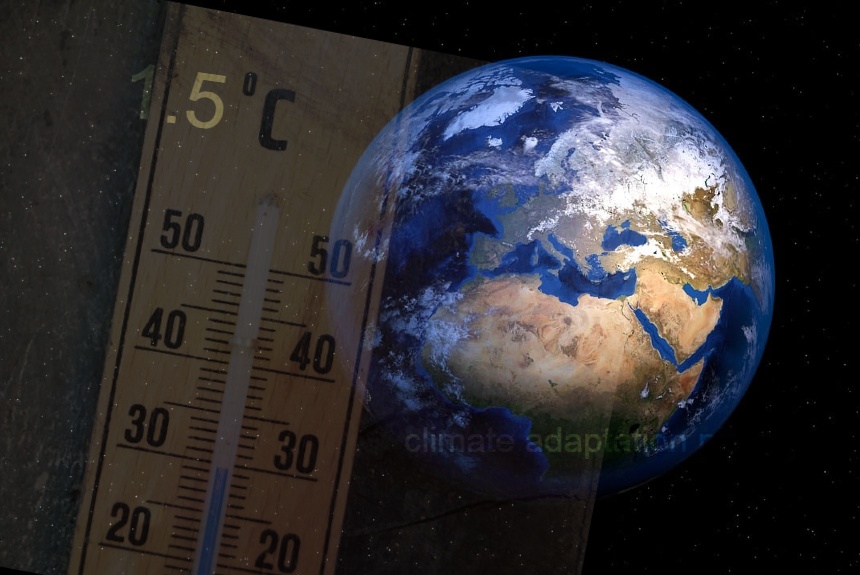A report released on 17 May by the World Meteorological Organisation (WMO), an arm of the United Nations, says that we will more likely than not breach the 1.5°C warming limit within the next five years (Global temperatures, 2023).
The report found a 66% chance that global temperatures will exceed 1.5°C for at least one year between 2023 and 2027 and a 98% likelihood that one year of the next five years and during the five-year period will be the hottest years ever.
WMO Secretary-General Prof. Petteri Taalas states, “This report does not mean that we will permanently exceed the 1.5°C level specified in the Paris Agreement, which refers to long-term warming over many years. However, WMO is sounding the alarm that we will breach the 1.5°C level on a temporary basis with increasing frequency”.
Prof Taalas also warns that a warming El Niño expected to develop in the coming months combined with climate change could push global temperatures into uncharted territory, and this will have far-reaching repercussions for health, food security, water management and the environment, and preparation is crucial.
The Economist reports that in the months of April and May, countries in South-East Asia experienced record-breaking temperatures (South-East Asia, 2023).
South-East Asia (2023) says that on 13 May, Singapore reached 37°C, its highest temperature since 1983. Vietnam registered 44.1°C on May 6. And the last two weeks of April, many parts of Bangladesh, India, Laos, and Thailand suffered through scorching heat waves.
The article notes that the World Weather Attribution Project, an attribution study finds these record-breaking temperatures were 30 times made more likely by climate change.
Catherine Brahic, The Economist’s Environment editor, notes that the WMO update comes with an important warning that exceeding the 1.5°C threshold will at first be a one-off and global average temperature will go up and down every year because of other climate patterns such as the ENSO Oscillation or natural events like earthquakes that could send aerosols to the atmosphere that has a cooling effect.
However, beneath this rise and fall, there will be a steady and long-term rise in global average temperature due driven by unabated GHG emissions. So, after the first overshoot, there will be more to come, and if this happens in a sustained period, we will then have breached the 1.5°C warming limit.
But this does not mean that we cannot reverse the overshoot, Brahic says, as there are available technologies that could help us pull down the temperature rise, such as carbon-sucking technologies like direct air carbon capture and storage (DACCS), which captures carbon from the atmosphere and storing it underground permanently, or through the slower process of preserving and expanding our forest and ecosystems.
The IPPC report has been calling for drastic actions to meet the Paris Agreement of limiting warming below 2°C and preferably within 1.5°C (The Evidence is, 2022).
Although there have been some encouraging developments from the energy sector in decarbonising the industry and increasing renewable energy generation, the phasing out of coal has not been fast enough.
There have been some encouraging developments from the energy sector regarding their falling GHG emissions. The fourth edition of Ember’s Global Electricity Review shows that emissions from the sector could peak by 2023 due to more renewable energy generation and the phasing down of coal plants – although not fast enough to meet the Paris Agreement goals.
Regarding direct air carbon capture and storage (DACCS) technology, there are 18 plants operating worldwide, according to the IEA. One of them is in Iceland. The Orca plant captures 4,000 tonnes of carbon every year, a world record for now.
In Texas, Occidental Petroleum, a US oil firm, is planning to build a much larger plant with a capacity to remove 500,000 tonnes a year. Put these into perspective, the world is emitting around 50 billion tonnes of GHG every year.
The capacity of these plants may seem insignificant, but this is just one of the myriads of tools and solutions we possess that, when all together scaled up and implemented, will allow us to limit warming.
“We have the tools and know-how required to limit warming,” IPCC Chair Hoesung Lee says. If these are scaled up and applied more widely and equitably, they can support deep emissions reductions and stimulate innovation.”
These tools and know-how include a major transition of the energy sector, more uptake of renewable energy, carbon capture and storage technologies, lifestyle and behaviour changes that go hand in hand with policies, infrastructure and technology in place to help us do it, compact and walkable cities to lower energy consumption, reducing waste by reusing and recycling products, hydrogen to power hard to decarbonise sectors, and improving agriculture, forestry and land use practices to provide large-scale emissions reductions.
Sources:
Global temperatures set to reach new records in next five years. (2023, May 17). World Meteorological Organization. Retrieved from https://public.wmo.int/en/media/press-release/global-temperatures-set-reach-new-records-next-five-years
South-East Asia is in the grip of a record-breaking heatwave. (2023, May 17). The Economist. Retrieved from https://www.economist.com/graphic-detail/2023/05/17/south-east-asia-is-in-the-grip-of-a-record-breaking-heatwave
The evidence is clear: the time for action is now. We can halve emissions by 2030. (2022). IPCC. Retrieved from https://www.ipcc.ch/2022/04/04/ipcc-ar6-wgiii-pressrelease/



Leave a Reply